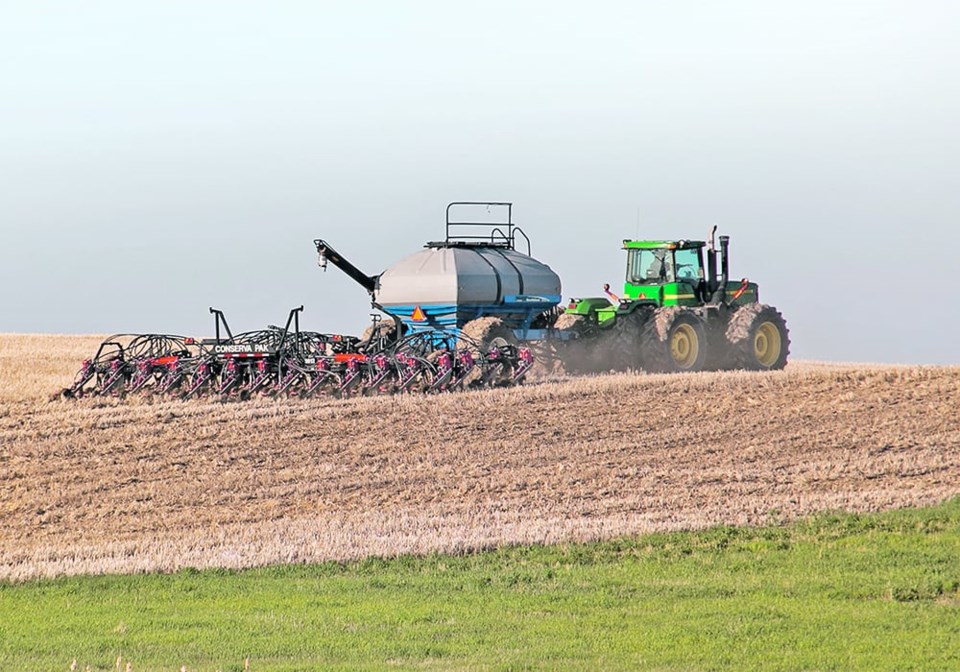WESTERN PRODUCER — For certain things in agriculture, such as laws, regulations and income support for farmers, the border between Canada and the United States does matter.
But for other things, it doesn’t.
The type of soil and growing conditions on grain farms in southeastern Saskatchewan should be comparable to farms in northwestern North Dakota.
The types of crops are also similar with farmers on both sides of the border growing pulses, canola, spring wheat and other cereals.
But there is another difference.
Data shows that cropland in southeastern Saskatchewan is more expensive than land across the border.
In late April, North Dakota State University released estimates of cropland values across the state.
The average value for cropland in the winter of 2024 was US$1,582 per acre in northwestern North Dakota.
Meanwhile, in a report published earlier this year, Farm Credit Canada said the average value in 2023 for southeastern Saskatchewan was $2,900 per acre.
Converting from U.S. to Canadian currency:
- Northwestern North Dakota — $2,183 per acre
- Southeastern Saskatchewan — $2,900 per acre
- That’s a difference of 33 percent.
Bryon Parman, an agricultural finance specialist with NDSU extension, isn’t familiar with farmland values in Canada.
However, it’s obvious that land values in the northwest region of his state are relatively cheap compared to other parts of North Dakota.
From 2019-24, the average price of farmland in southeastern North Dakota climbed from $2,928 per acre to $4,235 per acre, a jump of $1,300 per acre.
In the northwest, average prices have gone from $1,189 per acre in 2019 to $1,582 in 2024, an increase of $393.
The price gap between farmland in the southern and eastern parts of the state, when compared to the northwest, can be explained with two words.
“Corn and soybeans have changed the dynamic of North Dakota. It has changed the dynamic of the most valuable farmland in the state,” Parman said in a telephone interview with The Western Producer.
The south-central and southeastern parts of the state are warmer and wetter. More growing degree days and more moisture mean corn and soybeans are feasible crops.
“That’s all there is to it. It’s not that you can’t make money farming in the northwest — you absolutely can,” Parman said.
“But I can’t afford to pay $6,000 an acre on field pea land.… In order to pay that kind of money, I’ve got to be (growing) corn, soybeans and sugarbeets (or) potatoes.”
Who can own land in North Dakota?
Both Saskatchewan and North Dakota have restrictive farm ownership rules.
In Saskatchewan, only Canadians are permitted to buy farmland, and the province prohibits publicly traded companies and pension funds from owning agricultural land.
South of the border, North Dakota allows corporations and limited partnerships to own farmland, but the state has tight constraints on such ownership.
Corporate ownership is allowed in “limited circumstances,” says Fredrickson, a U.S. law firm.
“Those circumstances include ownership by closely related family members and co-operatives…. The law was amended again in 2019 to include relatives as distant as second cousins.”
However, some very wealthy people do own North Dakota farmland.
In 2022 an entity controlled by Bill Gates purchased a 2,100 acre potato farm near Grafton, N.D., for a reported $13 million. The purchase provoked a backlash from some farmers in the state, but the North Dakota attorney general eventually approved the deal.
More rain, more value?
Southeastern Saskatchewan and northwestern North Dakota have comparable crops with farmers growing spring wheat, durum and pulses. However, canola is more popular north of the border.
One key difference is that southeastern Saskatchewan is slightly wetter.
In an average year, Environment Canada data shows that Estevan, Sask., receives 454 millimetres of precipitation. Regina averages 390 mm per year.
In comparison, Crosby, N.D., received 381 mm of precipitation, Bowbells, N.D., 432 mm and Williston, N.D., 365 mm.
Rainfall could be a factor in land values, but data shows that cropland prices between the two regions were comparable in 2019. By 2023, the gap between cropland in southeastern Saskatchewan and northwestern North Dakota had expanded to C$875 per acre.
Corn and soybeans will determine future land prices
Overall, farmland values across North Dakota increased more than 10 per cent from 2023 to 2024.
That continues a recent trend, in which values climbed 11 per cent in 2022 and 13.5 per cent in 2023. The robust gains are directly connected to farm profitability, Parman said.
“There was a lot of cash floating around. Farmers have cash, they buy land.”
The story is similar in Saskatchewan.
Farming has been profitable in recent years with the exception of the 2021 drought, which has encouraged farmers to expand.
“There remained a lack of available farmland (in Saskatchewan) to meet demand, resulting in higher market values,” FCC said in its 2023 land values report
Looking ahead, it’s possible that land values in northwestern North Dakota could rise and narrow the price gap with the eastern half of the state.
However, a lot depends on the profitability of corn and soybeans compared to crops such as peas and wheat, Parman said.
“If all a sudden pulse crops start selling for a massive premium and it’s a little too hot in southern North Dakota … then you might see that gap close a little bit.”
Contact [email protected]




